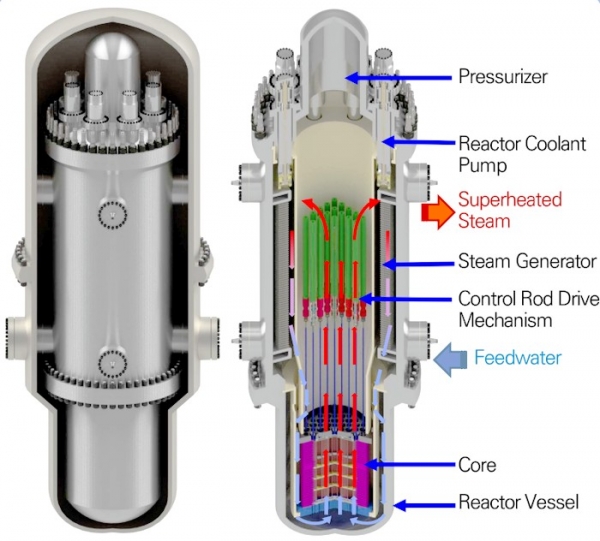
The Intergovernmental Panel on Climate Change (IPCC) suggested that the global community should achieve net-zero emissions by 2050 to give the world a chance of limiting the global temperature rise to 1.5в„ғ. The net-zero emission is broadly the same as carbon neutral: CO2 emissions are being generated, but they are offset by the same amount being removed by technology. At the current state, to reach net-zero emission, CO2 emissions should be reduced, but offsetting emissions are also necessary. Replacing fossil fuels with “renewables, hydrogen and nuclear” is the most urgent task for each country to achieve net-zero emission. Renewable powers, such as solar and wind are set to expand, however, they are reliant on weather conditions. Hydrogen power is not developed enough for industrial scale. Since nuclear power is low-carbon energy, which is its strength, the burden on nuclear power is currently mounting. In this vein, the small modular reactor (SMR) is being introduced as the upcoming generation’s power source.
SMRs are nuclear reactors that have a power capacity of 300 MW(e) per unit (one-third of the power capacity of full-scale reactors). SMRs are physically small, about the size of 1/10 to a quarter of the full-scale reactor. The technology of the SMR is a scaled-down version of a full-scale reactor.
There are various advantages of SMRs. Due to their small size, SMRs require a smaller carbon footprint, and therefore, can be sited on various locations and be easily constructed compared to full-scale reactors. In comparison to full-scale reactors, SMR designs are simpler, and the safety concept for SMRs relies more on passive systems and inherent safety characteristics of the reactor, which means that in such circumstances neither human intervention nor external power is required to shut down the system. The SMR’s slightly reduced power is compensated by the advantages it offers, for the coal-fired power plants, the power is about 300 to 400 MWh, almost equivalent to some SMRs. The IEA estimates this advantage will help reduce the coal-fired power plants usage by 80% by 2040 compared to its level in 2017. In addition, the heat produced in SMRs would allow cities to be heated, and allow the production of fresh water since it allows the desalination of seawater. Due to these advantages, some countries such as Canada, China, Russia, and the U.S. are constructing or planning to construct SMRs. In particular, some experts predict that if commercialization begins after enough technology development, SMRs can be exported to developing countries, where electricity demand is soaring.
Nevertheless, there are negative opinions on SMRs. Nuclear power maintains its danger and the treatment of its waste makes it a criticized energy. SMR technology was developed to make the use of nuclear power safer and more acceptable. However, SMRs still hold the similar hazards as nuclear power, threatening numerous lives with the probability of accidents, and still not free from used nuclear fuel treatment problems. Experts are also concerned about the economical aspect of SMRs. Compared to full-scale reactors, SMRs are expected to have more expensive electric power production prices. In other words, SMRs have low economic competitiveness among the new and renewable energies.
SMR is receiving attention as a next-generation nuclear power plant, although it has to overcome the voices of concern and vigilance.


